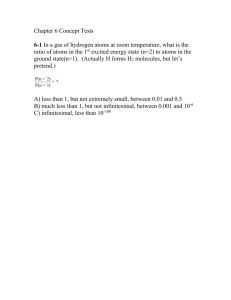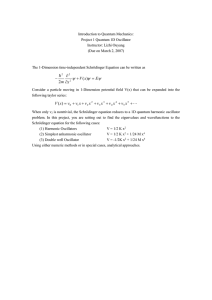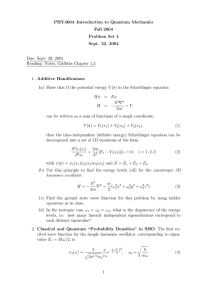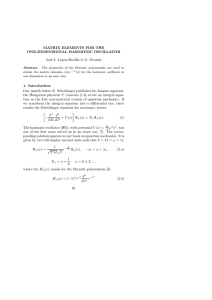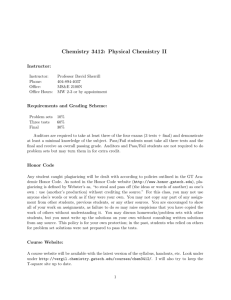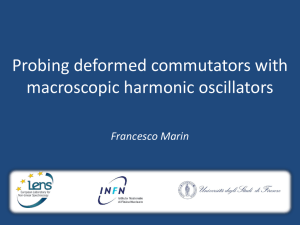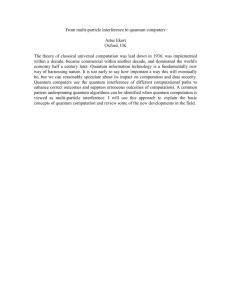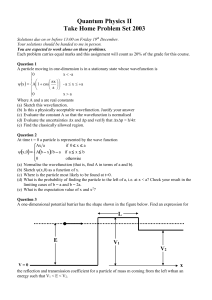6-15 A quantum system has non-degenerate energy levels
advertisement
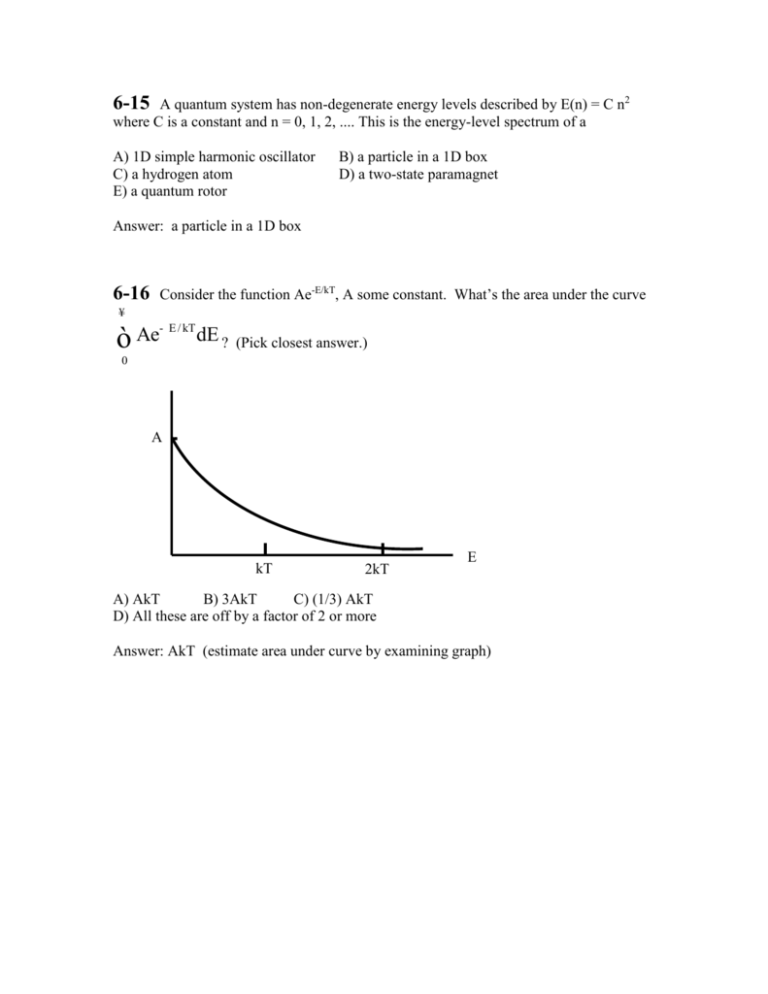
6-15 A quantum system has non-degenerate energy levels described by E(n) = C n2 where C is a constant and n = 0, 1, 2, .... This is the energy-level spectrum of a A) 1D simple harmonic oscillator C) a hydrogen atom E) a quantum rotor B) a particle in a 1D box D) a two-state paramagnet Answer: a particle in a 1D box 6-16 Consider the function Ae-E/kT, A some constant. What’s the area under the curve ¥ ò Ae - E / kT dE ? (Pick closest answer.) 0 A kT 2kT E A) AkT B) 3AkT C) (1/3) AkT D) All these are off by a factor of 2 or more Answer: AkT (estimate area under curve by examining graph) 6-17 Recall dF = ¶F ¶F dT + dV ¶T V ¶V T and dF = - S dT + - p dV True (A) or False (B) : ¶S ¶p = ¶V T ¶T V Answer: True Follows from: 6-18 ¶ 2F ¶ 2F = ¶ V¶ T ¶ T¶ V A quantum system has degenerate energy levels described by E(n) = - C n2 where C is a constant and n = +1, 2, .... This is the energy-level spectrum of a A) 1D simple harmonic oscillator C) a hydrogen atom E) a quantum rotor B) a particle in a 1D box D) a two-state paramagnet Answer: a hydrogen atom, C = 13.6 eV 6-19 True(A) or False(B): for x, y = 0, 1, 2.. å x,y e x+ y ö æ öæ x ÷ç y÷ ç = çå e ÷ç e ÷ å ÷ ÷ ç çè x ÷ øçè y ø Answer: True 6-20 As the temperature decreases, wavepackets describing particles in a gas tend to get A) larger B) smaller C) stay constant in size Answer: larger The “thermal deBroglie wavelength” is l = h 3mkT 6-21. A 1D SHO quantum system is in the “high-temperature” regime kT>>. What is the thermal average energy of the system? E kT 0 A) kT B) (3/2)kT C) (1/2)kT Answer: Equipartition says the answer is kT. A 1D simple harmonic oscillator has 2 degrees of freedom [E = (1/2)mv2 + (1/2)kx2]. Each d.o.f. has (1/2)kT of energy. 6-22. A 1D SHO quantum system is in the “low-temperature” regime kT<<. thermal average energy of the system is closest to : A) 0 B) kT C) E 0 kT Answer: zero. The exact answer is e e- e / kT < < e (See lecture notes, p.6-21) The
